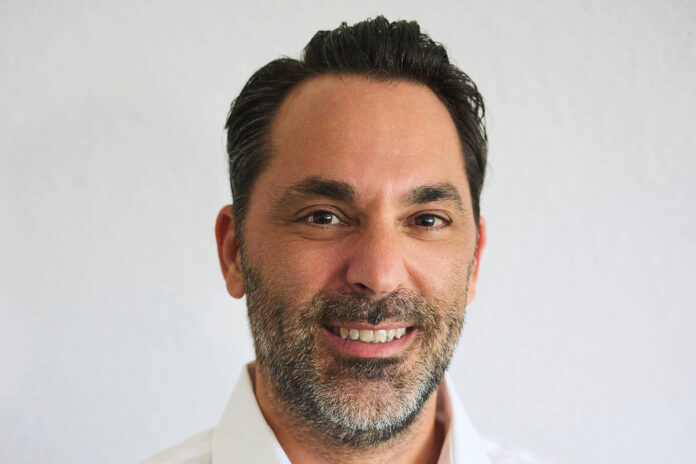The Unforeseen Shift: Mark Gray’s Journey from Entertainment Reporter to Chronicler of Tragedy
Mark Gray is a seasoned freelance entertainment reporter with an impressive tenure of nearly 25 years, contributing to major publications like People, Rolling Stone, and Entertainment Weekly. His career has been marked by the glamour and excitement of covering shows, particularly in Las Vegas, where the spectacle of pyrotechnics and live performances create a vibrant backdrop for his work.
However, one fateful night in October 2017 would etch a traumatic experience into his life forever, transforming his narrative from one of celebration to confronting a national tragedy.
The Event that Changed Everything
On the final night of the Route 91 Harvest Festival, as Jason Aldean’s closing act filled the night air, Gray was enjoying what he assumed were the familiar pops and crackles of a lively concert atmosphere. Initially dismissing the initial sounds as part of the entertainment, he was suddenly thrust into a nightmare. The realization struck hard when he noticed fans around him shrieking in panic.
"I thought, ‘What kind of an a—hole brings fireworks to a concert?’" Gray recalls. It was in that moment he understood the dire situation unfolding—a mass shooting was in progress. Positioned in a VIP suite, he quickly gathered his instincts, dropped to the ground, and bravely crawled to retrieve his laptop and computer bag before making a hasty escape from the venue.
From Reporter to First-Person Narrator
The night that should have concluded with a lighthearted piece about the festival transformed into a harrowing account of survival. Gray’s original plan had been to write about the "10-best-things" he had encountered that weekend, but after fleeing the scene, his focus shifted dramatically. Obligation took hold; he penned a hard-hitting news story for Rolling Stone, capturing the chaos and terror he had witnessed.
"I didn’t really ever read it," he admits. "I just sent it, closed my laptop, and tried to get some sleep." In that solitary act of writing, Gray found an unexpected responsibility to report not just about the concert, but about the trauma that would linger long after the last note faded.
Partnering in Healing: A Community Emerges
In the aftermath of the shooting, Gray connected with Mary Jo Von Tillow, a survivor whose journey mirrored the collective pain of many. Her husband had been one of the early casualties of the event, and she became an advocate for a community of survivors, emphasizing the need to share their grief while expressing a desire to "move forward" rather than simply move on.
Together, Gray and Von Tillow embarked on a project that would ultimately culminate in the book The Las Vegas Massacre Connections: Finding Strength Through Tragedy After America’s Deadliest Mass Shooting. Set to be released soon, the book weaves testimonials from survivors who have sought strength in the face of unimaginable loss. With contributions from a diverse array of voices—including a 9/11 firefighter and a victims’ rights attorney—it seeks to create a tapestry of hope amid despair.
The Art of Balancing Narratives
Gray is adamant that this book is not merely his story; rather, it serves as a vessel for the experiences of others. "There’s a delicate balance," he notes, acknowledging Von Tillow’s significant role in shaping the narrative. The tales within the book provide a pathway towards healing, with each chapter concluding on a note of optimism, highlighting the resilience of the human spirit.
Von Tillow herself was a passionate music lover who had found joy in the Route 91 festival, making her loss even more poignant. Both she and Gray recognize the importance of storytelling as a means to confront grief and trauma.
Facing the Ghosts of the Past
Despite the passage of time, Gray has found himself grappling with the aftermath of that fateful night. Initially consumed by the event, he has learned to integrate the experience into his life, revisiting the scene of the tragedy and covering performances once again. However, returning to the world he knew has not been without its challenges.
His first performance post-shooting at the Fremont Street Experience in December 2017 was fraught with discomfort, showcasing the lingering shadows of fear. “I wanted to overcome the fear,” he admits, “but I was terrified the whole time.”
Continued Struggles and Community Building
Even now, fireworks evoke strong emotional responses for Gray. "To this day, I still can’t [handle fireworks]," he confesses. The sounds transport him back to that night, a reminder of the shared trauma he now channels into facilitating healing for others.
By weaving his story with those of other survivors, Gray aims to foster a sense of community, reinforcing the notion that healing does not require a linear approach but rather a collective effort to navigate grief. His work serves as a powerful reminder that even in darkness, stories of resilience and hope can emerge, lighting the path for those still struggling in the shadows.
Through his experiences, Gray embodies the transformation of trauma into healing, demonstrating how shared narratives can illuminate the way forward for individuals seeking solace after tragedy.
